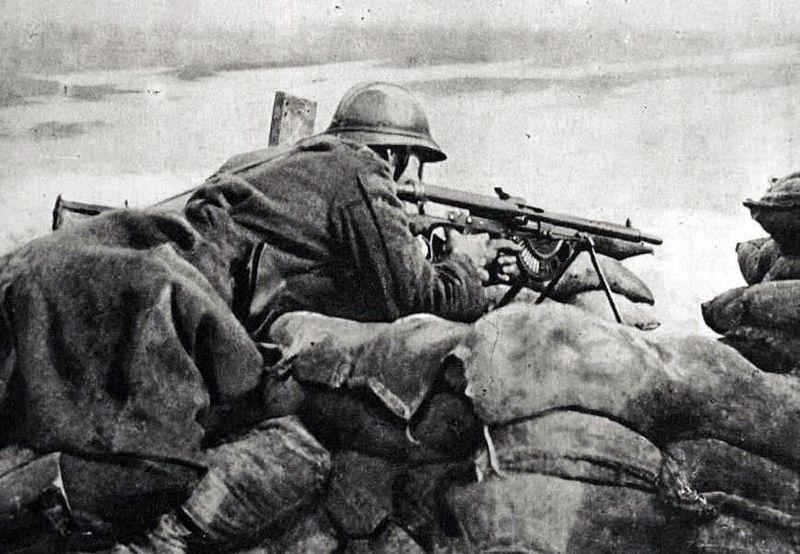There have been numerous occasions throughout history where the creation of a firearm has been met with unanimous hatred. For many examples, the motto of “if it ain’t broke, don’t fix it” was completely ignored, resulting in some very disgruntled soldiers with naff guns in their hands.
We have taken a look at four examples from throughout history, and we can assure you if these were airsoft guns we’d be slinging them right in the bin!
FP-45 Liberator

The FP-45 Liberator, although designed with good intentions, turned out to be pretty awful. It was meant to be dished out to guerrillas and resistance forces throughout Europe and Asia and was produced to be a cheap and cheerful pistol to manufacture. It was a pretty crudely designed, one-shot pistol made from only 23 steel parts. The cost of manufacture was only $2.10 per unit, which led to the FP-45 earning the nickname of the “Woolworth pistol”.
The pistol fired a .45-calibre round from an unrifled barrel, had a maximum effective range of around eight yards (just over seven metres) and required a wooden tool to dig out the empty cartridge after firing. The instruction manual for the pistol was also produced in cartoon form to try and negate the language barrier, and we can’t quite decide whether that was a brilliant or a terrible idea?!
It was supposed to be a used for sneaking up on enemies, firing against them and then taking their weapons. But the pistol never really saw the light of day as it was so unanimously hated. Large quantities of the pistol were handed over to the OSS (the predecessor of the CIA), but they found they weren’t even worth giving away!
The Ross Rifle

The Ross Rifle was a Canadian-made firearm which saw some action during World War I and was fairly well praised for its accuracy over long distances. But that’s pretty much where the praise ended, as its attempt at innovative changes resulted in a pretty rubbish rifle.
The conventional bolt action rifles of the time had the turn-and-pull bolt, but the Ross Rifle tried something a bit different with a single-motion bolt that was supposed to make firing much quicker. However, this feature also meant that the gun could be reassembled incorrectly but still able to fire, which caused the bolt to fly out the back of the gun, killing or seriously injuring the shooter… ouch.
It was also fitted with a bayonet, which had the tendency of falling off when fired, and was very susceptible to jamming from the mud associated with combat. It was so poorly received that many Canadian soldiers would discard them in favor of looted Lee-Enfield rifles.
Modele 1915 CSRG Chauchat

Whenever you see people talking about the worst gun in history, the Chauchat will make the list more often than not. There are those out there who will argue that the Chauchat got a bad reputation, seeing as it was the first mass-produced automatic rifle to be used in action anywhere in the world and was designed to operate as a light machine gun that could be carried by one man.
However, it did have some pretty big flaws in its design and build. Firstly, there were screws in the gun that would come loose from too much firing, causing the gun to fall apart in the hands. The parts used were of fairly poor quality due to mass production, which didn’t help matters, and the sights were misaligned, so you could never quite be sure where you were following.
But perhaps the worst feature of the Chauchat was the issue with dirt getting into it. It featured an open-sided magazine which allowed all sorts to get into the mechanisms, which would resort in frequent stoppages. The gun was also prone to overheating, and many soldiers found that it would jam after only 100 rounds.
Unfortunately, there wasn’t an alternative for a light machine gun until the Americans introduced the BAR into action, but this wasn’t until right at the end of World War I.
Sten Gun

While Britain was involved in the Battle of Britain and facing a German invasion, the Sten emerged as a new weapon. It was mainly as a result of the army having to replace weapons lost during the evacuation of Dunkirk while trying to expand at the same time.
This resulted in the mass-production of the Sten, although the earlier versions were poorly received. The Mk II’s and Mk III’s received some rather inappropriate nicknames; “the Stench gun” was one of the milder ones that we can include in this feature!
Some of the cheapest variants were made of as few as 47 parts which was reflected in the very basic appearance. The Sten gun was notoriously unreliable throughout all variations, was well known for jamming or accidentally misfiring and was unsuitable for conflict in open country as it encouraged a waste of ammo and only had an effective range of around 30 metres. It only cost fifteen shillings (three-quarters of a pound) to produce, making it a very cheap option for mass-production.
But despite all of these issues, it continued to be produced and used until 1953, when it was replaced by the Sterling submachine gun and gradually withdrawn from British service throughout the 1960s.
These are just four examples of terrible firearms from history, but do you agree with the list?






